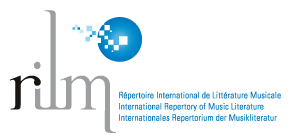Sobre censura y corrección en las letras de tango. De la sustitución a la transposición.
Palabras clave:
tango, letras, censura, sustitución, transposiciónResumen
Luego del levantamiento militar del 4 de junio de 1943, las nuevas autoridades tomaron la decisión de aplicar severa y sistemáticamente la legislación que desde 1933 regulaba las emisiones radiales. Su objetivo era purificar el lenguaje, proteger el “buen gusto” y transmitir ciertos valores morales. Comienza entonces una nueva etapa de censura radial que duraría seis años, y en la que las letras de tango fueron uno de los principales blancos del aparato contralor. La mayor parte de las modificaciones fueron hechas por los propios letristas. En algunos casos, se trató de una simple sustitución léxica. En otros, la rima o la métrica impusieron ciertas restricciones que generaron variantes de muy diverso estilo. También hubo tangos en los que la maniobra de censura estuvo orientada a morigerar las pasiones y velar ciertas aristas de la historia narrada, o a transformar su contenido político en otra cosa. Quizás los ejemplos más extremos en cuanto a las modificaciones realizadas para satisfacer a los censores son dos tangos de Celedonio Flores –Mano a mano y El bulín de la calle Ayacucho– cuyas nuevas versiones exhiben un proceso de reescritura que puede ser definido y analizado mediante lo que Gerard Genette llama transposición.
Descargas
Descargas
Publicado
Número
Sección
Licencia
Derechos de autor 2018 Emiliano Sued

Esta obra está bajo una licencia internacional Creative Commons Atribución-NoComercial 4.0.
Atribución/Reconocimiento-NoComercial 4.0 Internacional
https://creativecommons.org/licenses/by-nc/4.0/
Usted es libre de:
- Compartir — copiar y redistribuir el material en cualquier medio o formato.
- Adaptar — remezclar, transformar y construir a partir del material.
- La licenciante no puede revocar estas libertades en tanto usted siga los términos de la licencia
Bajo los siguientes términos:
- Atribución — Usted debe dar crédito de manera adecuada, brindar un enlace a la licencia, e indicar si se han realizado cambios. Puede hacerlo en cualquier forma razonable, pero no de forma tal que sugiera que usted o su uso tienen el apoyo de la licenciante.
- No Comercial — Usted no puede hacer uso del material con propósitos comerciales.
- No hay restricciones adicionales — No puede aplicar términos legales ni medidas tecnológicas que restrinjan legalmente a otras a hacer cualquier uso permitido por la licencia.
Avisos:
No tiene que cumplir con la licencia para elementos del material en el dominio público o cuando su uso esté permitido por una excepción o limitación aplicable.
No se dan garantías. La licencia podría no darle todos los permisos que necesita para el uso que tenga previsto. Por ejemplo, otros derechos como publicidad, privacidad, o derechos morales pueden limitar la forma en que utilice el material.






